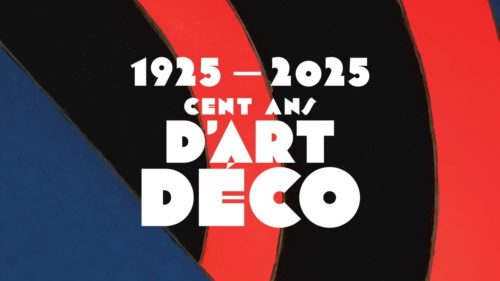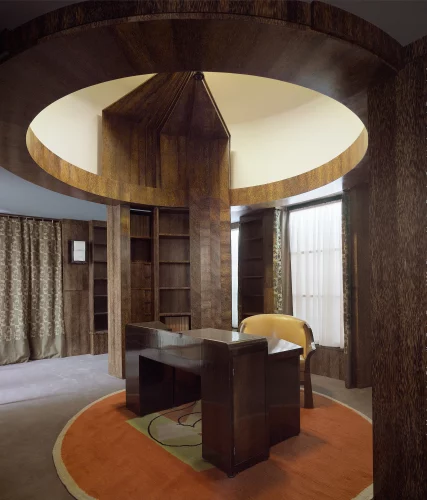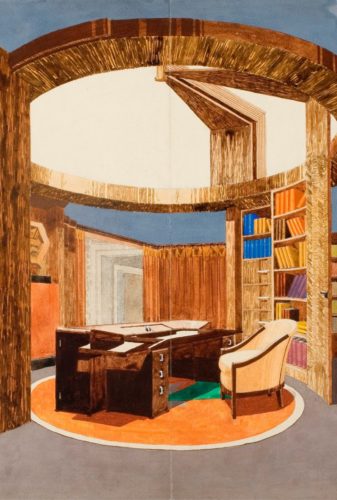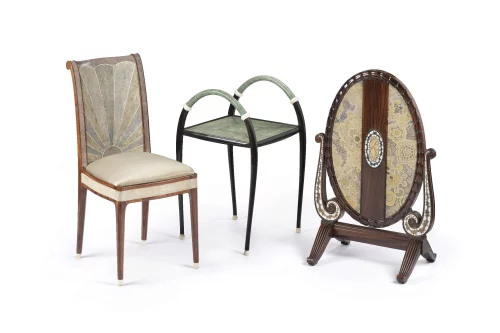
The Musée des Arts Décoratifs is no stranger to celebrating Art Deco. Born in the 1910s from the flowing lines of Art Nouveau and fully realised in the 1920s, the movement has long been intertwined with the museum’s own history.
Having once hosted the salons of the Société des Artistes Décorateurs, the museum now marks a centenary of Art Deco with a grand retrospective featuring nearly a thousand works. It is a testament to decades of careful curation and collaboration between major institutions and private collectors alike.
Emerging in the aftermath of the First World War, Art Deco represented a meeting point between modernity and refinement. Defined by its architectural precision and geometric grace, it quickly gained favour among Parisian architects and decorators. Its costly production ensured it remained a symbol of luxury and exclusivity. Yet beneath its polished surfaces lay a spirit of creative freedom that transcended boundaries and infused itself into fashion, theatre, jewellery, furniture, and even modes of transport.
The roaring twenties’ appetite for opulence found perfect expression in Art Deco. Beneath the splendour, however, was a Europe still reeling from economic uncertainty. For the higher classes, the style became a declaration of renewal, a visual language for freedom, optimism and beauty reborn.


The exhibition begins in the museum’s nave and unfolds across the second and third floors, guiding visitors through a chronological journey from the 1920s to contemporary reinterpretations. It reminds us that Art Deco, with its fertile balance of discipline and imagination, continues to inspire modern creators.
The opening highlight, a restored cabin from the former Étoile du Nord train, immediately evokes the grandeur of the Orient Express, a timeless emblem of sophistication and luxury. This sets the tone for what follows: a display of Cartier jewellery distinguished by bold colour pairings and sleek modernist lines. Cartier, ever ahead of its time, was already experimenting with Art Deco aesthetics as early as the 1910s, before the movement had even found its name.
As the exhibition unfolds, visitors encounter the pioneering figures who shaped the era. From Sonia Delaunay’s exploration of colour and rhythm to Clément Mère and Albert-Armand Rateau’s devotion to decorative craft, the diversity of vision highlights the movement’s reach across disciplines.
Pierre Chareau’s Lampe Religieuse nods to Cubist abstraction, while furnishings from Nelly de Rothschild’s Parisian apartment, designed by Mère and Clément Rousseau, embody the spirit of bold reinvention that defined the age.

Jacques Doucet’s personal collection, once displayed in his studio on the western edge of Paris, also takes centre stage. Featuring works by Eileen Gray, who mastered Japanese lacquer techniques under Seizo Sugawara, and Marcel Coard, Doucet’s interiors blend materials like snakeskin with understated elegance, creating an eclectic yet balanced interior.
The exhibition concludes with a captivating presentation by Jacques Grange, granted carte blanche to display his own vision of Art Deco. His refined yet playful selection serves as a fitting finale, a vibrant celebration of the movement’s enduring spirit.
Leaving the exhibition, it was hard not only to be struck by the craftsmanship on display but by the joy and vitality that Art Deco continues to embody. A century on, it remains a dazzling symbol of creativity without compromise, where art, design and beauty converge in a fascinating dialogue.




